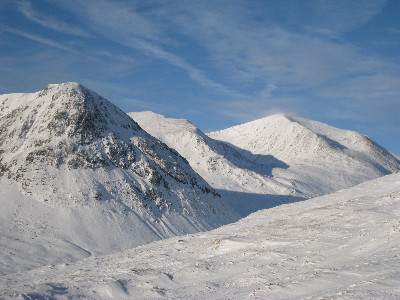Friday 17th December 2021, 9:17am

With many people enjoying a break from work over the festive period, itís always a busy time on the hills, especially in the week between Christmas and New Year.
Here are our top 10 tips for enjoying the hills safely and responsibly this winter:
1. Keep a close eye on the weather and avalanche forecasts Ė Use specialist mountain weather forecasts in the days leading up to your planned trips to get an idea of rain/snowfall, wind, and what conditions might be like underfoot. The Scottish Avalanche Information Service provides daily avalanche hazard forecasts as well as blogs from all the areas covered, which is a great way to find out what conditions are like on the ground.
Met office mountain weather forecasts
Mountain Weather Information Service
Scottish Avalanche Information Service
2. Remember it gets dark early Ė This is midwinter, so daylight is limited, and if youíre planning a big day start early and be prepared to walk in and out in darkness with your trusty headtorch. Packing a spare headtorch also makes sense as it saves you having to fiddle around replacing batteries in the dark with gloves on (or cold fingers).
3. Check whatís in your rucksack Ė At the start of winter, itís a good idea to Ďwinteriseí your rucksack and add all those additional gloves, hats, warm layers, goggles and emergency items. But equally it pays to have a physical checklist you can check off every time you head off to the hills, to make sure you remembered to put those warm gloves, your extra hat or your compass back in after the last time. There is nothing worse than not having that one essential item when you really need it!
Watch this video on selecting kit for a winter day out.
4. Use your planning time to look at options Ė In winter especially, weather and conditions can change fast, so itís worth pre-planning a variety of adventures so you can pick and choose according to where the weather and snow conditions are most appropriate. Use guide books and online route descriptions to help you choose routes appropriate to your abilities, and cultivate a flexible mindset that says itís ok to change plans if things donít go as expected.
Watch how two friends plan their winter routes
See how they refine their plans using the forecasts.
5. Itís cold out there Ė Of course we expect it to be cold on top of a mountain in winter, but sometimes other factors make it much colder than expected. Wind chill can bring the effective temperature down considerably, so carry plenty of warm layers and a windproof outer shell, especially if moving slowly or stopping for any reason. High energy food and hot drinks will help to warm you from inside, and hats, gloves and neck warmers will keep your extremities warm and dry. Underfoot it may be wet or icy, so good quality mountain boots are essential, and you may need crampons and an ice axe to keep safe on hard snow or ice.
Be aware of the symptoms of hypothermia and what to do if they develop.
6. Be prepared to find your way in poor visibility Ė This includes cloud, snow and low light or darkness. If youíre using a mobile phone to navigate, take a backup power source and be aware that phone batteries can fail at low temperatures, so itís good to have your map and compass too, and know how to use them.
7. Allow extra time for travel Ė the roads can be surprisingly busy and, depending on the weather, can present a challenge in themselves. Having spare provisions and a sleeping bag, blanket and shovel in the car can be useful!
8. Follow the Scottish Outdoor Access Code Ė This applies equally in winter as it does at any other time of the year! If walking or ski touring around the ski resort areas, avoid interfering with the working of the resort or endangering yourself or others. The Snowsports Touring and Ski Resorts Code sets out how to behave around ski areas and, if in doubt, please ask a member of staff.
Find the Scottish Outdoor Access Code here
Read the Snowsports Touring Code
9. Stay connected - Always tell someone responsible where you are planning to go and when they should expect to hear from you, and remember to let them know when you are safely back down! They should also know what to do if you donít get in touch or return when expected, and how to alert the emergency services.
10. And finally - If you or someone else is lost or in an accident and unable to get off the hill, get yourself into a safe position, call 999 and ask for Police, then ask them for assistance from Mountain Rescue.